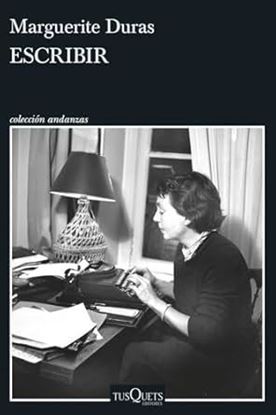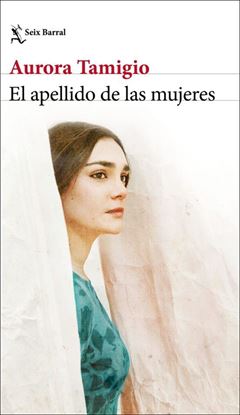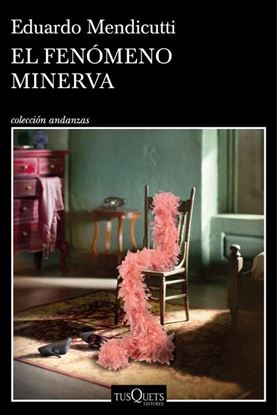

MARIDOS Y AMANTES
Dos mujeres separadas por décadas y continentes, y unidas por una misteriosa reliquia familiar, el sacrificio y la búsqueda de la verdad.
Nueva Inglaterra, 2022.
Mallory Dunne, una madre soltera, ha recibido la llamada que toda madre teme: su hijo de diez años ha tenido que ser trasladado de urgencia al hospital por una intoxicación provocada por un hongo venenoso conocido como «cicuta verde», por lo que ahora su vida pende de un hilo. Mallory deberá buscar un donante de riñón que le dé a su hijo la oportunidad de tener una vida normal, viéndose obligada a desenterrar dos desgarradores secretos de su pasado: el misterio que envuelve la adopción de su madre en un infame orfanato irlandés en 1952, y su apabullante romance de juventud con su mejor amigo y también uno de los cantautores más queridos del mundo; un cuento de hadas truncado por una devastadora traición.
El Cairo, 1951.
Tras huir de los horrores de la guerra, la refugiada húngara Hannah Ainsworth ha forjado una nueva y respetable vida trabajando como traductora, y se ha casado con un diplomático británico. Pero un fortuito encuentro con el enigmático gerente de un hotel repleto de espías terminará en un apasionado romance, lo que despertará en Hannah la nostalgia por todo lo que una vez tuvo. Mientras una revolución se cuece a fuego lento en las calles egipcias, Hannah, que está embarazada, quedará atrapada en un juego de intriga política entre dos hombres que la empujará a un acto de sacrificio, el cual dejará huella a lo largo de generaciones.
1,350
1,080
ESCRIBIR
Este volumen, una de las últimas obras de Marguerite Duras, es una reflexión sobre el proceso de escritura, y también sobre esa soledad dolorosa pero imprescindible que permite a la autora entregarse a «lo único que llenaba mi vida»: escribir. Es, además, una meditación sobre el vértigo que produce pensar en el siguiente libro, sobre el lugar o la casa en que se escribe, sobre las experiencias que impactan e inspiran un relato, como por ejemplo el trágico accidente de un joven piloto británico en la Segunda Guerra Mundial, la muerte de una mosca en una pared, o una colección de pinturas.
1,350
1,080
ATMOSPHERE (MX)
Durante el verano de 1980, la profesora de Astrofísica Joan Goodwin comienza a formarse para ser astronauta en el Centro Espacial Johnson de Houston junto con un grupo de compañeros excepcional: Hank Redmond, piloto de Top Gun; John Griffin y Lydia Danes, especialistas de la misión; la bondadosa Donna Fitzgerald; y Vanessa Ford, una magnética y misteriosa ingeniera aeronáutica. Mientras los nuevos astronautas se preparan para sus primeros vuelos, Joan halla un amor y una pasión que nunca había imaginado, y comienza a cuestionarse todo cuanto creía saber sobre su lugar en el universo observable.
1,350
1,080
EL APELLIDO DE LAS MUJERES
Todo comienza con Rosa. Nacida en Sicilia en los albores del siglo xx, crece en un pueblecito sobre las montañas y, desde muy niña, revela haber sido formada de la misma materia de su nombre, es decir, de flores que siempre brotan, de frutos fecundos contra las dolencias, de madera resistente y espinosa. En 1925 conoce a Sebastiano Quaranta; se trata de un amor a primera vista, en el que la vista, sin embargo, no engaña. Rosa se escapa para casarse con él y juntos abren un mesón, que se convertirá en el lugar de referencia de los habitantes de los cuatro pueblos aledaños.
A través de las mujeres de esta familia ?Rosa, su hija Selma y sus nietas, Patrizia, Lavinia y Marinella?, la novela indaga qué significó ser una mujer en el sur de Europa a lo largo del siglo XX.
1,350
1,080
EL FENOMENO MINERVA
La borrasca Sergio, con sus violentas alteraciones meteorológicas, se adueña de la bahía. Por esas mismas fechas, vuelve, después de muchos años de ausencia, una de sus vecinas de pasado más doloroso y ajetreado, la guapa Minerva, transexual de cierto éxito en algunos locales nocturnos. Antes de su transición, Minerva se llamaba Sergio y vuelve herida y llena de rencor por una vieja ofensa que necesita vengar. La borrasca desatada le ayudará a conseguirlo. La tormenta, los vientos, las mareas irán desbaratándolo todo: el altivo edificio playero Condesa Elena y la vida, los recuerdos, los deseos y los secretos de sus vecinos. Todo quedará en carne viva, arruinado. Y sus habitantes, desenmascarados para siempre.
1,350
1,080
LO QUE NOS GUSTABA
Yoshi es un diseñador industrial en busca de su independencia profesional; Burro, un fotógrafo fascinado por los insectos que no para de viajar; Aiko aspira a convertirse en médica mientras lucha contra la ansiedad, y Yōko es una peluquera que despliega su talento en un icónico salón de belleza de Roppongi. Los cuatro terminan conviviendo por casualidad en un piso en pleno centro de Tokio. Pasan el tiempo juntos compartiendo sus sueños, se apoyan en los momentos difíciles y, con el tiempo, surgen dos parejas. Sin embargo, el anhelo por procurar la felicidad ajena siembra, paradójicamente, el sufrimiento. El amor que surge al abandonar el ego comienza a transformarse en crueldad. Ésta es la historia de un grupo de jóvenes en la ciudad Tokio en los años noventa.
1,350
1,080














